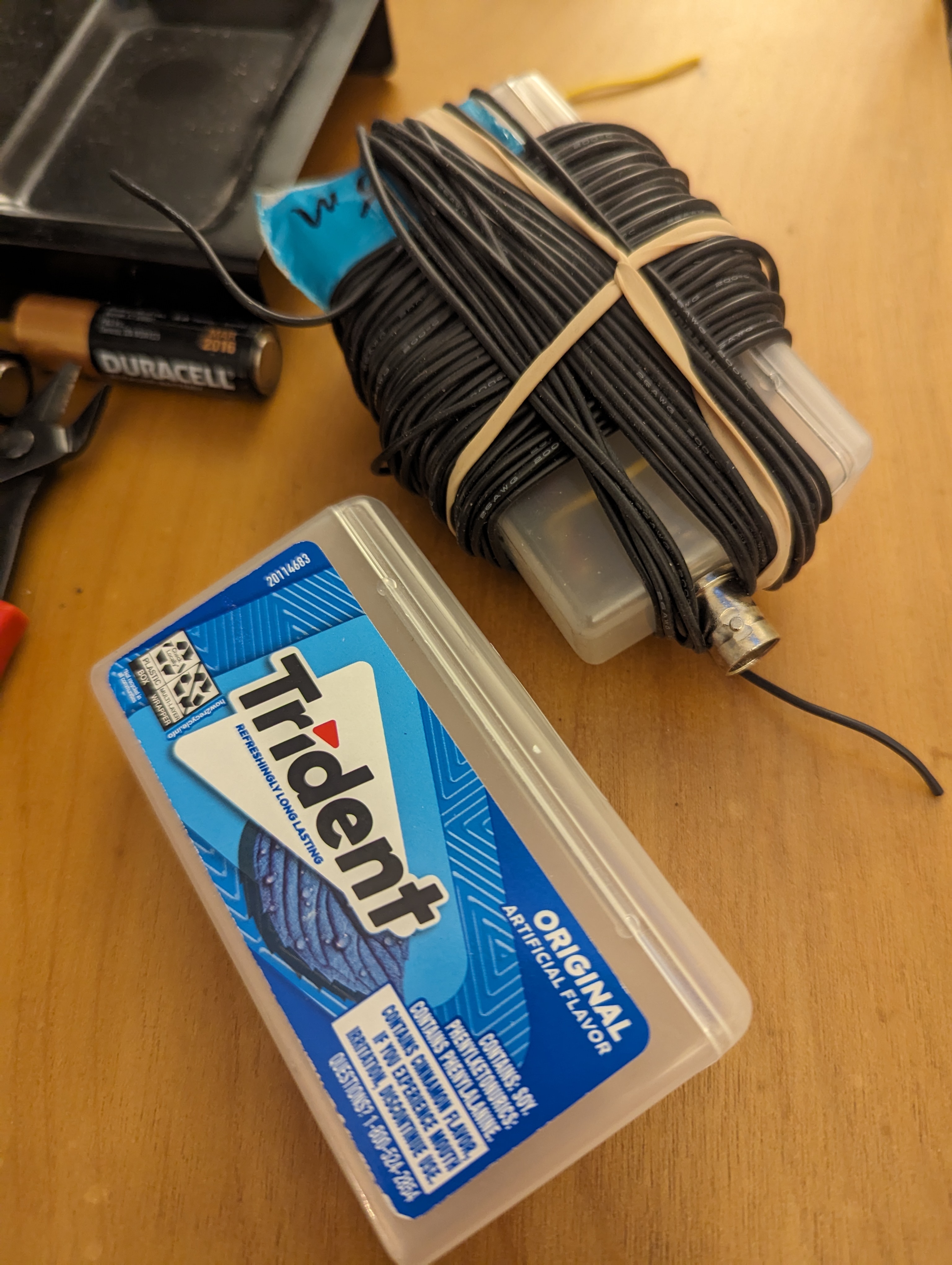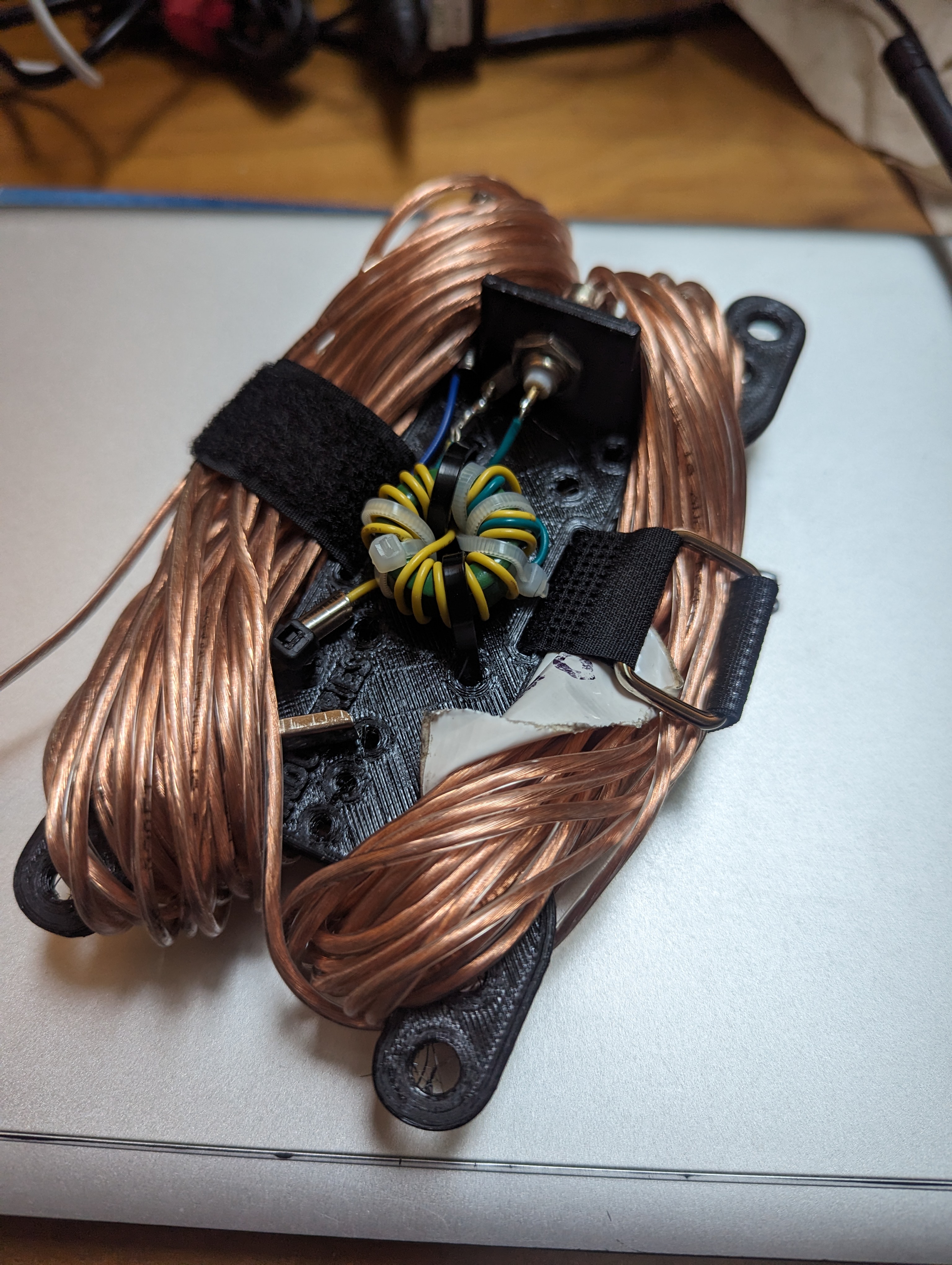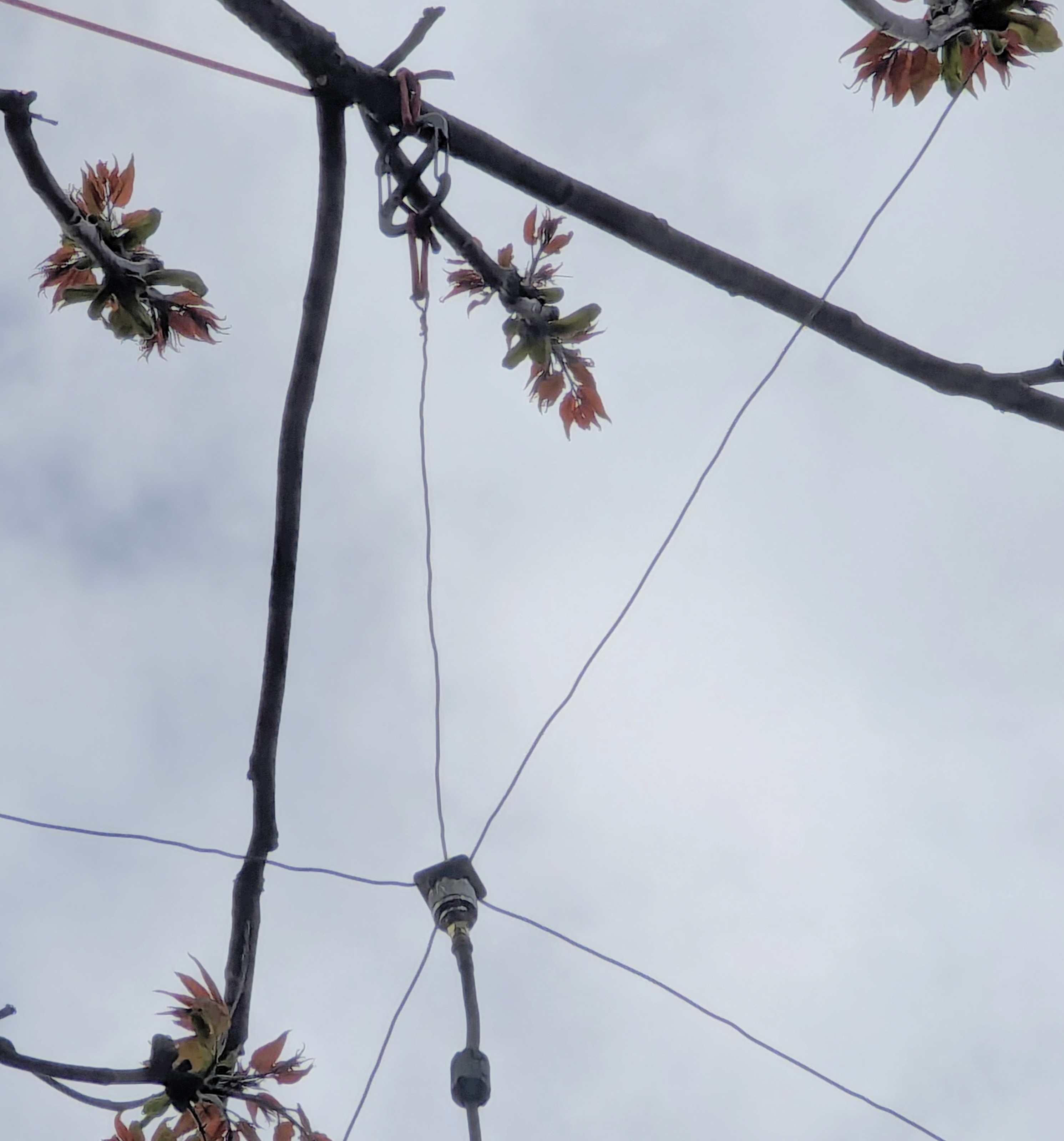The bands were dead with the terrible geomagnetic storm this weekend, so HF is very limited. I was only able to contact Lititz from Mountville.
With the downtime, I built some new EFHW antennas. I tied some wires to trees, stretched them out, and tuned each of the 2 20m EFHW antennas with the NanoVNA: one speaker wire, and the other lightweight silicone wire. I built new ununs and mounted them in plastic gum cases and a 3D-printed winder.
I also cut a lightweight EFRW, 12.5m, from the silicone wire and gave it a gum case as a winder.
I’ll test the new antennas soon when the bands are better.



